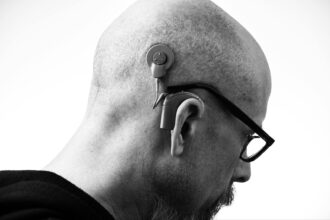After a long trip, whether it’s a business flight, a vacation, or a road journey, the importance of a restful night’s sleep cannot be overstated. Traveling, especially long-distance, can be physically and mentally exhausting. The time zone changes, constant movement, and unfamiliar sleeping conditions often leave us craving comfort and relaxation. One of the key elements to help recover and reset your body after a long journey is creating the perfect sleep environment.
Understanding how factors like bed comfort, room ambiance, and sleep routines can play a significant role in your rest is crucial. Why understanding firm vs. soft beds can improve your rest is a critical aspect when setting up your sleep space for maximum relaxation. In this article, we’ll explore ways to enhance your sleep after a trip by focusing on your environment, from your bed to your bedroom layout.
1. Choose the Right Mattress for Comfort
The foundation of any great sleep environment starts with a mattress that suits your needs. After a long trip, your body needs a mattress that offers the right level of support to relieve pressure points and aid muscle recovery. But how do you choose between a firm or soft mattress?
Understanding the difference between firm and soft mattresses can significantly affect your sleep quality. A firmer mattress may provide better support for those who need extra back and spinal support, making it ideal for individuals with back pain or those who sleep on their back. On the other hand, a soft mattress can be more comfortable for side sleepers as it helps with pressure relief on the shoulders and hips.
If you’re unsure, it’s important to assess your preferred sleeping position and body weight. Lightweight sleepers may find soft mattresses more comfortable, while heavier sleepers often prefer firmer surfaces for added support. Consider your personal needs, and don’t forget to experiment with different mattress types to find what works best for your body.
2. Control the Room Temperature
The temperature of the room plays a huge role in how well you sleep. After a long trip, your body may need to regulate its temperature to fall into a deep, restorative sleep. A room that’s too hot or too cold can prevent your body from fully relaxing, making it harder to get the quality rest you deserve.
Experts recommend keeping the room temperature between 60-67°F (15-19°C) for optimal sleep. You can also incorporate cooling bedding or sleepwear that helps to regulate body temperature. Investing in a high-quality air conditioner, fan, or even a cooling mattress pad can help maintain a comfortable temperature while you sleep.
3. Create a Relaxing Ambiance
When setting up your sleep environment, think of it as a sanctuary designed to help you unwind after a hectic journey. The ambiance of your room is a crucial factor in enhancing relaxation and sleep quality. Here are some simple yet effective tips to create a soothing atmosphere:
- Dim the Lights: Bright, harsh lighting can interfere with your body’s natural sleep cycle. Instead, use soft, warm lighting that helps signal to your brain that it’s time to wind down.
- Use Aromatherapy: Scents like lavender and chamomile have calming properties that can help reduce stress and anxiety. Consider using essential oils, a diffuser, or a soothing candle to create a peaceful environment.
- Reduce Noise: Traveling can expose you to a range of sounds—plane engines, busy airports, or noisy hotels. Back home, it’s essential to reduce noise for better sleep. Invest in noise-canceling curtains or a white noise machine to mask any distracting sounds.
4. Declutter Your Space
A cluttered room can contribute to a cluttered mind, making it difficult to relax. To create the perfect sleep environment, ensure that your bedroom is tidy and peaceful. A clean and organized space can signal to your brain that it’s time to rest.
Keep only essential items in your room and store away any distractions like electronic devices or work-related materials. If you tend to accumulate items on your nightstand or bed, take a few minutes to clear them away before you settle in for the night.
5. Make Your Bed Inviting
After a long trip, a well-made bed can make all the difference in how quickly you can fall asleep. Invest in soft, comfortable linens and cozy blankets that make your bed feel like an inviting oasis. You can also add extra pillows for more comfort, especially if you like to adjust the way you lay down throughout the night.
Sheets made from natural fibers like cotton, linen, or bamboo are breathable and help to regulate temperature, which is perfect after a long trip. A thick, soft duvet or comforter can also help you feel cocooned, providing warmth and comfort to help you relax.
6. Develop a Post-Travel Sleep Routine
Establishing a consistent sleep routine is essential for easing back into a regular sleep schedule after a long trip. Your body may have adjusted to a different time zone or irregular sleep patterns during your travels, so it’s important to reestablish a routine that works for you.
Start by going to bed at the same time every night, even if you’re feeling a little jet-lagged. This consistency helps reset your internal body clock and improve your sleep quality. Consider incorporating relaxation techniques like reading, stretching, or meditation before bed to wind down and signal to your body that it’s time to sleep.
7. Limit Screen Time Before Bed
One of the biggest challenges of creating the perfect sleep environment in the digital age is managing screen time before bed. The blue light emitted by phones, tablets, and computers can interfere with your body’s production of melatonin, a hormone that regulates sleep.
To ensure a better night’s sleep, avoid screens at least 30 minutes before bed. Instead, try reading a book, journaling, or listening to calming music. These activities help you relax and prepare for restful sleep.
8. Stay Hydrated and Eat Light
Hydration and food intake also play a role in how well you sleep. After a long trip, it’s essential to drink plenty of water to help your body recover. However, avoid drinking too much liquid right before bed to minimize middle-of-the-night trips to the bathroom.
When it comes to food, eating a large meal late at night can lead to discomfort and disrupt your sleep. Opt for a light snack if you’re hungry before bed, such as a small bowl of yogurt or a banana. Foods rich in magnesium, like almonds or leafy greens, can help relax your muscles and promote deeper sleep. If you’re exploring natural ways to wind down at night, you can also shop THC gummies designed to support relaxation and restful sleep.
Conclusion
Creating the perfect sleep environment after a long trip is about more than just a comfortable bed—it’s about transforming your entire bedroom into a haven that supports your body’s recovery and promotes deep, restful sleep. By choosing the right mattress, controlling the temperature, setting the right ambiance, and following a consistent sleep routine, you can ensure that you wake up refreshed and ready to take on the day ahead. Your sleep environment can be your best ally after travel, so invest the time and effort to make it a peaceful, relaxing space.














